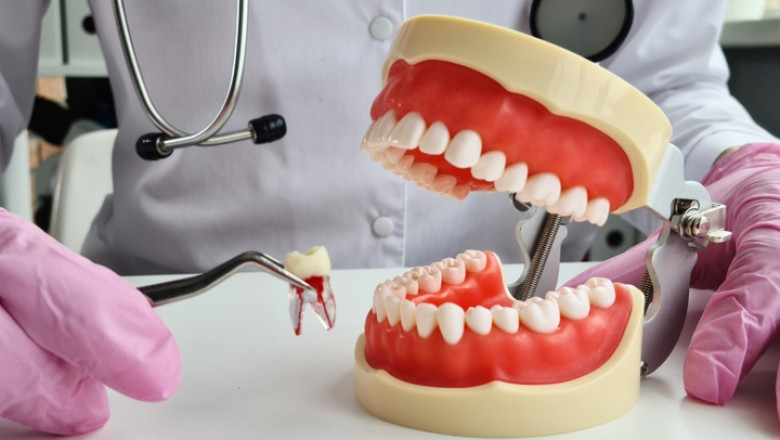views
Tooth removal, also known as tooth extraction, is one of the most common dental procedures—but it’s often misunderstood. While preserving your natural teeth is always the goal, there are situations when removing a tooth is the best way to protect your overall oral health. Whether it’s due to damage, decay, or overcrowding, extractions are performed with care and precision to minimize discomfort and ensure a healthy recovery.
In this blog, we’ll explore when tooth removal is necessary, what the procedure involves, and how to care for your mouth after an extraction.
Why Tooth Removal May Be Necessary
There are several reasons your dentist may recommend removing a tooth, including:
1. Severe Decay or Damage
When a tooth is too damaged to be repaired with a filling, crown, or root canal, removal may be the only option to prevent the spread of infection.
2. Impacted Wisdom Teeth
Wisdom teeth often don’t have enough room to grow properly. They can become impacted—trapped under the gums—or cause crowding, pain, or infection.
3. Gum Disease (Periodontitis)
Advanced periodontal disease can weaken the bone and tissues that support the teeth, making them loose and susceptible to extraction.
4. Overcrowding Before Orthodontics
In some orthodontic cases, a tooth may need to be removed to make room for other teeth to align properly.
5. Fractured Teeth Below the Gumline
If a tooth is broken at or below the gumline and cannot be restored, extraction may be required.
Types of Tooth Extractions
Simple Extraction
This is performed on visible teeth that can be easily accessed. It involves loosening the tooth with a dental instrument and gently removing it.
Surgical Extraction
Used for teeth that are broken, impacted, or not fully erupted (common with wisdom teeth), surgical extractions may require an incision in the gum and removal of some bone.
Your dentist will determine which method is needed based on your condition and X-rays.
What to Expect During the Procedure
Tooth extractions are typically performed under local anesthesia, ensuring you feel no pain during the procedure. In some cases, sedation options are available for anxious patients or more complex surgical removals.
Here’s a brief overview of the process:
-
Examination and Imaging – X-rays are taken to assess the tooth’s position and root structure.
-
Anesthesia – The area is numbed to prevent discomfort.
-
Extraction – The tooth is loosened and removed, or a surgical approach is used if necessary.
-
Post-Extraction Care – Gauze is placed to control bleeding, and aftercare instructions are provided.
Recovery and Aftercare
Proper aftercare is essential to ensure a smooth and quick recovery. You can expect some tenderness, swelling, or mild discomfort for a few days, which can usually be managed with over-the-counter pain medication.
Follow these tips to heal comfortably:
-
Rest and avoid strenuous activity for 24 hours
-
Apply an ice pack to reduce swelling
-
Avoid smoking, using straws, or spitting forcefully to prevent dry socket
-
Stick to soft foods like yogurt, soup, or mashed potatoes
-
Keep the area clean, but avoid brushing directly over the extraction site initially
Most patients recover fully within a few days to a week, depending on the complexity of the extraction.
What Comes Next?
After a tooth is removed, your dentist may discuss replacement options such as dental implants, bridges, or dentures. Replacing a missing tooth is important for maintaining jawbone health, preventing teeth from shifting, and restoring full function and appearance.
Tooth Extractions at Essential Dentistry
At Essential Dentistry, we understand that the idea of tooth removal can cause anxiety. Our team takes the time to explain every step of the procedure and ensures your comfort before, during, and after treatment. We use gentle techniques and modern technology to make the experience as smooth as possible.
Final Thoughts
Tooth removal isn’t something anyone looks forward to, but it’s sometimes a necessary step toward better oral health. When performed by an experienced and compassionate dental team, it can be a straightforward, pain-free process with lasting benefits. If you're facing dental discomfort or have been told you need an extraction, trust the expertise and care of a Dentist in Okotoks.














Comments
0 comment